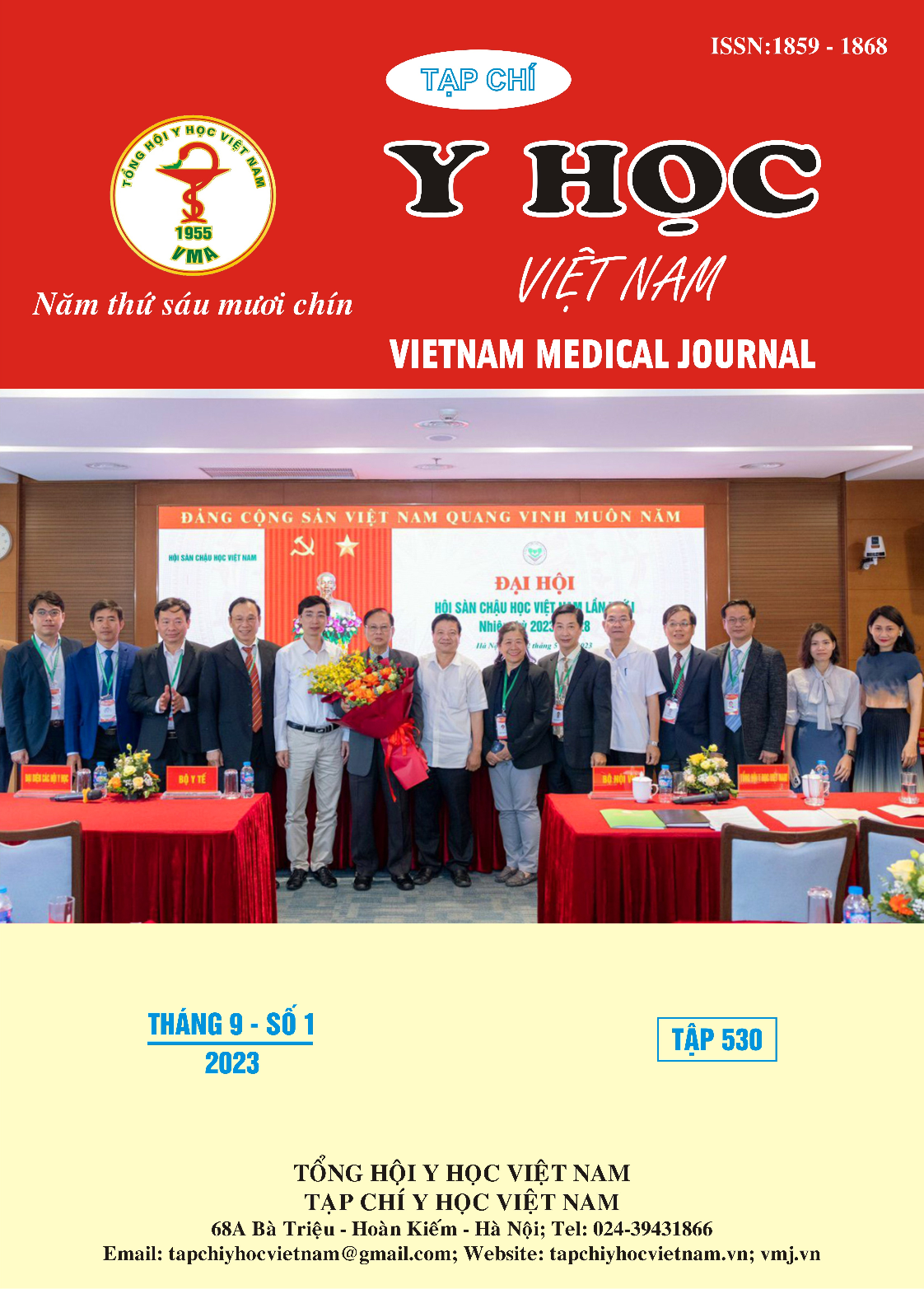COMPARATIVE STUDY ON EFFECTIVENESS OF PRESERVING VIETNAMESE OVARIAN TISSUE BETWEEN SLOW FREEZING AND VITRIFICATION PROTOCOLS BY TISSUE HISTOLOGICAL ANALYSIS
Main Article Content
Abstract
Freezing human ovarian tissue is primarily used to safeguard and restore the reproductive capabilities of cancer patients who are at high risk of infertility after radio- or chemotherapies. And it has been the sole way to maintain reproductive abilities prior to puberty. Controlled rate freezing (slow freezing) and vitrification are two main protocols in storing fertility. The objectives of this study are to evaluate and to compare the efficacy of two freezing protocols in Vietnamese ovarian tissue based on histological analysis via numbers of counted follicles between tissue segments of same donor. In this cross- sectional study, 24 ovarian tissues were obtained from 8 donors (27 ±3.78 years) were divided into three groups: fresh control group, slow freezing group and vitrification group. The integral composition of ovarian tissue that consists of primordial, primary and secondary follicles, remained unaltered following the freezing and warming procedures. In contrast to the fresh control group, the total number of counted follicles after two freezing methods was decreased, particularly the number of primary follicles, average 5.11± 4.14 follicles in slow freezing, 3.30 ± 6.40 follicles in vitrification, compared to 18.64 ± 15.34 follicles in fresh group, the differences had statistical significance (p<0.05). Notably, the proportion of primary follicles after vitrification (2.84 ± 2.83 %) was lower than that of fresh ones (13.84 ± 11.03 %), the disproportion was statistically significant (p<0.05). Both techniques could be able to store human ovarian tissue according to histological analysis, nevertheless slow freezing may be superior to vitrification.
Article Details
References
2. Anderson, R.A. and W.H. Wallace, Fertility preservation in girls and young women. Clin Endocrinol (Oxf), 2011. 75(4): p. 409-19.
3. Donnez J et al (2013). Restoration of ovarian activity and pregnancy after transplantation of cryopreserved ovarian tissue: a review of 60 cases of reimplantation. Fertil Steril, 99, 1503-13.
4. Gougeon, A., Regulation of ovarian follicular development in primates: facts and hypotheses. Endocr Rev, 1996. 17(2): p. 121-55
5. Herriaz S et al (2014). Improving ovarian tissue cryopreservation for oncologic patients: Slow freezing versus vitrification, effect of different procedures and devices. Fertil Steril; 101:755-84.
6. Keros, V., et al., Vitrification versus controlled-rate freezing in cryopreservation of human ovarian tissue. Hum Reprod, 2009. 24(7): p. 1670-83.
7. Leonel, E.C.R., et al., Stepped vitrification technique for human ovarian tissue cryopreservation.Sci Rep, 2019. 9(1): p. 20008.
8. Practice Committee of the American Society for Reproductive Medicine, Ovarian tissue and oocyte cryopreservation. Fertil Steril, 2008. 90(5 Suppl): p. S241-6.
9. Shi, Q., et al., Vitrification versus slow freezing for human ovarian tissue cryopreservation: a systematic review and meta-anlaysis. Sci Rep, 2017. 7(1): p. 8538.
10. Silber, S., et al., Duration of fertility after fresh and frozen ovary transplantation. Fertil Steril, 2010. 94(6): p. 2191-6.


